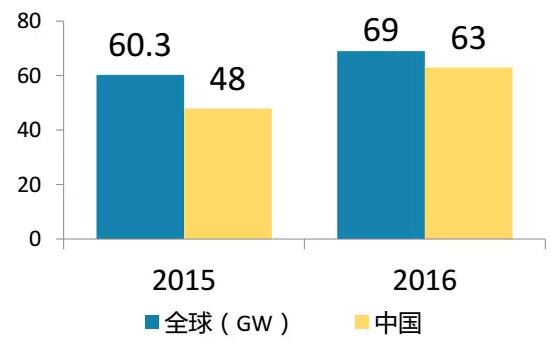Abstract The battle for single polycrystals began in 2015, and at the beginning of 2017, it has become increasingly fierce. Single crystals say that single crystals are good, and polycrystals say that polycrystals are good. So, what is the root cause of the single polycrystalline battle? Who is misleading consumers? First, the root cause of the single polycrystalline battle...
The battle for single polycrystals began in 2015, and at the beginning of 2017, it has become increasingly fierce. Single crystals say that single crystals are good, and polycrystals say polycrystalline. So, what is the root cause of the single polycrystalline battle? Who is misleading consumers? First, the root cause of the single polycrystalline battle

The root cause of the single polycrystalline battle is the oversupply of global silicon wafer production capacity in 2017. Figure 1 shows the silicon wafer link of China's PV industry development status introduced by Wang Bohua, secretary general of China Photovoltaic Industry Association on February 16, 2017. In we can see that in 2016, China's wafer production exceeded 63GW, an increase of more than 31% year-on-year, while 2016 global wafer production was only 69GW. Therefore, in 2017, even if the global wafer order of China's PV industry chain is included in the wafer, the wafer link will face a serious excess! First of all, the polysilicon film link will be switched to the diamond wire slice in 2017. The number of wafers per kilogram of silicon will be increased from 50 to 60/kg. The market share of 2017 China polysilicon wafer is calculated by 75%. The wafer production capacity will be 9.45GW; in addition, there are many silicon wafer factories with expansion plans, such as the ring expansion project, the 10GW monocrystalline silicon wafer project of Xingxin Ningxia; and the 16GW monocrystalline silicon wafer expanded by Longji. Project; 5GW monocrystalline silicon wafer project in Central China; Oriental hopes to cooperate with its 120,000 tons of polysilicon project 8GW single crystal silicon wafer project, the production capacity of 4 single crystal projects is 39GW, and the ingot furnace G6 upgrade For G7 capacity, it can be increased by 36%. It can be seen that the silicon wafer link of China's PV industry chain will be oversupplied in 2017. A cake is so big, the single crystal is much more, the polycrystal is naturally less, the polycrystal is much more, and the single crystal is naturally less. Therefore, for the sake of their own interests or survival, it is naturally inevitable that the single polycrystal will fool consumers and fight in the media. 
Second, who is ignoring consumers and power station investors?
Let's take a look at the recent media: A self-media released the National Key Laboratory of Environmental Adaptability of Industrial Products of China Electric Apparatus Research Institute on March 5, which revealed two typical climatic conditions: Sanya's humid and hot ocean climate and Turpan's dry and hot climate. Next, the power generation data of the power station measured by the single-crystal PERC module and the conventional polycrystalline silicon photovoltaic module outdoor demonstration base. The final conclusion is as shown in the figure below.

1. From the perspective of normalized power generation from different manufacturers, polycrystalline PV modules are 2.2% higher than single crystals.
2. From the same manufacturer's normalized power generation, polycrystalline PV modules are 2.9% higher (Sungrid) and 2.4% (BP Solar), respectively, than single crystals.
3. Higher initial photoinduced attenuation (LID) may be the main cause of low single-crystal photovoltaic power generation, and there may be other mechanisms that cannot be recovered in six to eight years.
4. The photovoltaic industry should immediately introduce new standards to tighten the oxygen content of silicon wafers and the 'initial photoattenuation' of the cells and components, namely Light Induced Degradation (LID).
[Conclusion] Single crystal components and polycrystalline components, the same two things, why there are completely different conclusions in different research institutions, there is no doubt that there is a conclusion that is wrong, if you do not find the bottom, then this error Will not be corrected, it will always damage the interests of the photovoltaic industry and investors. I hope someone is mistaken, not someone is turning black and white. Photovoltaic is an industry under the sun, time will prove everything!
WINNERLIFTING SAFETY EQUIPMENT CO.,LTD. , https://www.winnerlifting.com